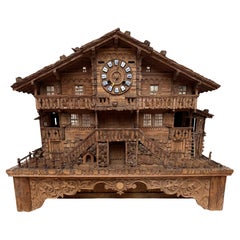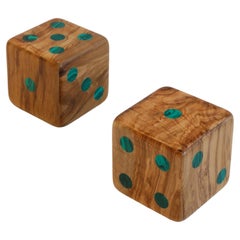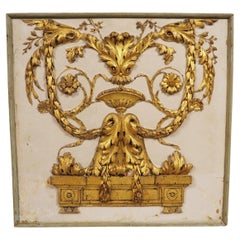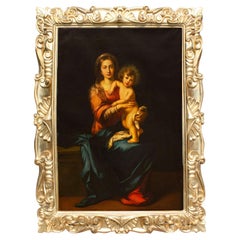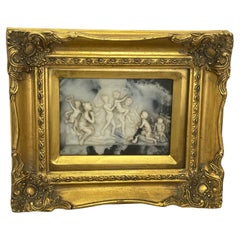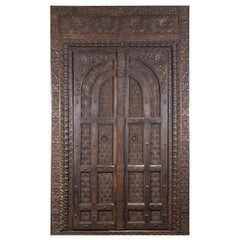Hand-Carved Decorative Art
Late 19th Century Swiss Black Forest Antique Hand-Carved Decorative Art
Brass, Iron, Enamel
2010s Colombian Hand-Carved Decorative Art
Malachite
19th Century French Antique Hand-Carved Decorative Art
Wood, Giltwood, Lacquer
1910s Italian Baroque Vintage Hand-Carved Decorative Art
Canvas, Giltwood
1950s German Arts and Crafts Vintage Hand-Carved Decorative Art
Metal
Late 18th Century Italian Rococo Antique Hand-Carved Decorative Art
Oak
1950s American Mid-Century Modern Vintage Hand-Carved Decorative Art
Rattan, Wood
Late 19th Century Congolese Primitive Antique Hand-Carved Decorative Art
Wood
Early 20th Century Victorian Hand-Carved Decorative Art
Hardwood
Mid-18th Century French French Provincial Antique Hand-Carved Decorative Art
Brass, Bronze
1910s Italian Baroque Vintage Hand-Carved Decorative Art
Canvas, Giltwood
1980s American Romantic Vintage Hand-Carved Decorative Art
Glass, Giltwood, Paper
1950s German Black Forest Vintage Hand-Carved Decorative Art
Wood
19th Century French French Provincial Antique Hand-Carved Decorative Art
Pine
1890s Tibetan Tibetan Antique Hand-Carved Decorative Art
Wood
Late 18th Century Italian Rococo Antique Hand-Carved Decorative Art
Walnut
20th Century African Tribal Hand-Carved Decorative Art
Wood
Mid-20th Century Danish Scandinavian Modern Hand-Carved Decorative Art
Pottery, Ceramic, Stoneware
17th Century Peruvian Antique Hand-Carved Decorative Art
Wood, Paint, Giltwood
Late 19th Century French Napoleon III Antique Hand-Carved Decorative Art
Metal
Late 18th Century Swedish Gustavian Antique Hand-Carved Decorative Art
Mirror, Pine, Giltwood
Late 19th Century French Antique Hand-Carved Decorative Art
Canvas, Giltwood
Late 19th Century Italian Baroque Antique Hand-Carved Decorative Art
Canvas, Giltwood
Early 20th Century French Hand-Carved Decorative Art
Bronze
Late 17th Century Portuguese Baroque Antique Hand-Carved Decorative Art
Pine, Giltwood
16th Century Belgian Gothic Antique Hand-Carved Decorative Art
Oak
Early 20th Century European Arts and Crafts Hand-Carved Decorative Art
Metal, Brass
Early 20th Century German Folk Art Hand-Carved Decorative Art
Wood, Paper
18th Century Swedish Gustavian Antique Hand-Carved Decorative Art
Pine
Late 18th Century Antique Hand-Carved Decorative Art
Gold Leaf
Early 20th Century English Victorian Hand-Carved Decorative Art
Brass
1880s French Black Forest Antique Hand-Carved Decorative Art
Wood
Late 19th Century French Antique Hand-Carved Decorative Art
Canvas, Giltwood
20th Century Spanish Neoclassical Revival Hand-Carved Decorative Art
Walnut
18th Century Swedish Gustavian Antique Hand-Carved Decorative Art
Glass, Mirror, Giltwood
17th Century Belgian Gothic Antique Hand-Carved Decorative Art
Oak
Early 20th Century German Black Forest Hand-Carved Decorative Art
Oak
Early 19th Century Italian Grand Tour Antique Hand-Carved Decorative Art
Glass, Wood
17th Century Italian Baroque Antique Hand-Carved Decorative Art
Walnut
1930s Swiss Expressionist Vintage Hand-Carved Decorative Art
Wood
18th Century and Earlier Italian Renaissance Antique Hand-Carved Decorative Art
Gold Leaf
18th Century French Antique Hand-Carved Decorative Art
Canvas, Wood, Paint
20th Century Unknown Primitive Hand-Carved Decorative Art
Wood
1890s English Late Victorian Antique Hand-Carved Decorative Art
Canvas, Wood, Giltwood
17th Century French Baroque Antique Hand-Carved Decorative Art
Canvas, Giltwood
Mid-20th Century Polish Scandinavian Modern Hand-Carved Decorative Art
Ceramic, Pottery
Early 20th Century Spanish Moorish Hand-Carved Decorative Art
Alabaster
18th Century French Louis XVI Antique Hand-Carved Decorative Art
Wood
2010s American Organic Modern Hand-Carved Decorative Art
Ceramic, Stoneware
Mid-19th Century Indian Anglo-Indian Antique Hand-Carved Decorative Art
Silk, Blown Glass, Ebony
Late 19th Century Austrian Vienna Secession Antique Hand-Carved Decorative Art
Gold Leaf
1850s French French Provincial Antique Hand-Carved Decorative Art
Mother-of-Pearl
Early 1900s French Art Nouveau Antique Hand-Carved Decorative Art
Fruitwood
1950s English Vintage Hand-Carved Decorative Art
Brass
Mid-20th Century French Mid-Century Modern Hand-Carved Decorative Art
Canvas, Wood, Paint
Late 17th Century Portuguese Baroque Antique Hand-Carved Decorative Art
Pine
17th Century Italian Baroque Antique Hand-Carved Decorative Art
Canvas, Giltwood
19th Century Belgian Antique Hand-Carved Decorative Art
Canvas, Plaster, Wood, Giltwood
18th Century Rococo Antique Hand-Carved Decorative Art
Gold Leaf
20th Century American Native American Hand-Carved Decorative Art
Wood
Read More
At Colonial Williamsburg, Everything Old Is New Again
With the help of a new director, the Virginia institution's folk art and decorative arts museums are undergoing extensive upgrades.
New York’s Hirschl & Adler Showcases the American Workmanship and Design Panache of Neoclassical Treasures
The gallery's latest exhibition proves that museum-quality pieces entice and inspire, whether in traditional or more modern interiors.
